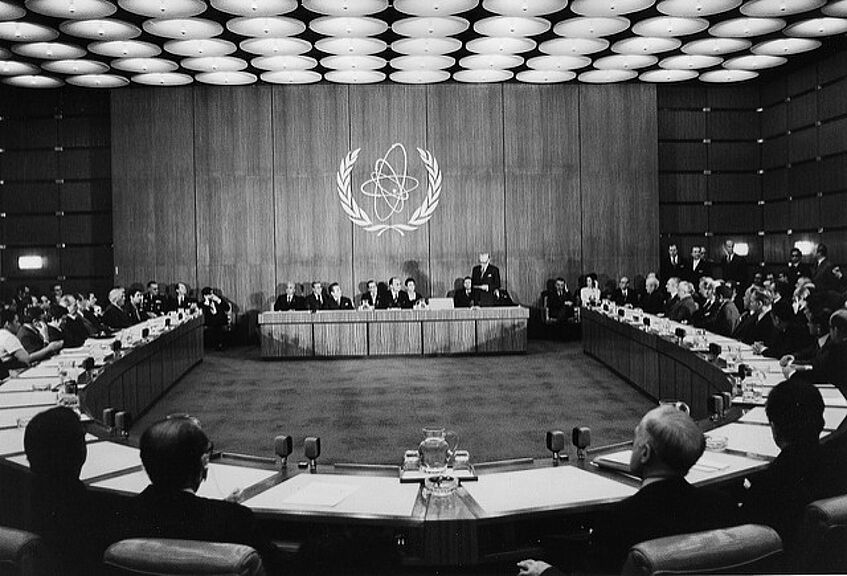The IAEA's Early History
On 8 December 1953, United States President Dwight D. Eisenhower proposed the creation of an international atomic agency that would promote the peaceful uses of nuclear technology in agriculture, medicine, and power generation, while providing humanity protection from the perils of nuclear weapons proliferation (watch Eisenhower's "Atoms for Peace" speech here). Understanding the creation of the International Atomic Energy Agency (IAEA) has great significance for the study of global governance and the history of international organizations. Created at a time of the intense global tensions precipitated by the Cold War, the establishment of the IAEA stands out as a great success in international cooperation. A multiyear grant from the Austrian Science Fund (FWF) was dedicated to the study of this crucial period in the history of international nuclear order (2015-2018).
In October 1956, an international conference at the UN headquarters in New York adopted the statute of the IAEA—a document that is almost as long as the UN Charter and which remains the legal foundation of the agency.
When the IAEA statute was negotiated, the nuclear world looked very different from today; the club of nuclear weapon states had three members, and the notion of nonproliferation had not yet entered into the policy lexicon. While the negotiators discussed roles for the agency that it would not, or only partially, receive (such as being the custodian of nuclear materials), they neglected aspects that are critical today, such as the threat of nuclear terrorism. Yet, the IAEA’s central mandate as expressed in its statute is broad; to promote the peaceful uses of nuclear technology without furthering the use of this technology for military purposes. During a tense phase of the Cold War, the statute was drafted in a remarkable act of cooperation between the United States and the Soviet Union. At the same time, the developing nations feared that the agency’s proposed safeguards system would divide the world into atomic ‘haves’ and ‘have-nots.’
An 2016 H-Diplo/ISSF policy roundtable, commissioned and introduced by Elisabeth Roehrlich, used the IAEA's anniversary as an opportunity to discuss the IAEA’s mandate and role in history and current affairs. Does the IAEA statute, which was written in a very different context, stand up to scrutiny today? What does the answer suggest about the IAEA and institutions of global nuclear governance more generally? How can the IAEA be strengthened? Read the essays by Matthew Bunn (Harvard University), Malfrid Braut-Hegghammer (University of Oslo), Trevor Findlay (University of Melbourne), Joseph Pilat (Los Alamos National Laboratory), Laura Rockwood (VCDNP), and Elisabeth Roehrlich (University of Vienna) here: ISSF Policy Roundtable on the IAEA at Sixty

The Board of Governors Room in 1974
© IAEA
